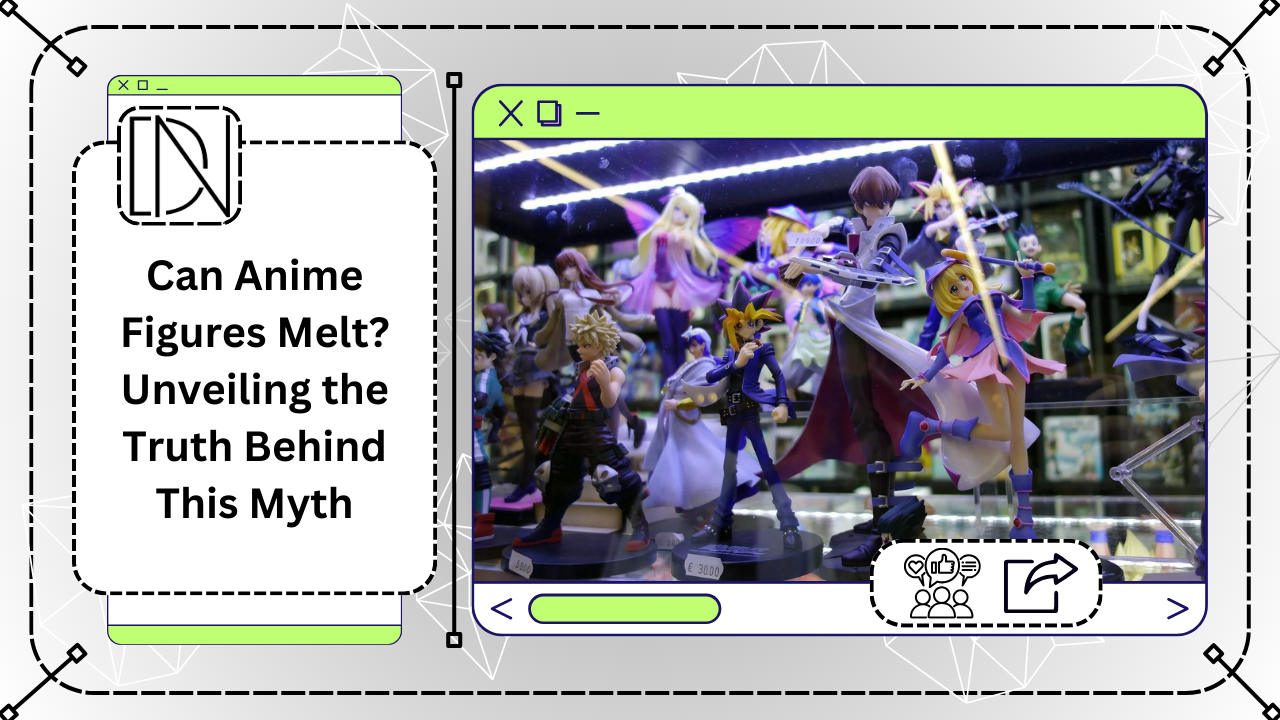Anime figures are beloved by fans worldwide, often cherished as works of art that bring iconic characters to life. These detailed collectibles adorn shelves and display cases, adding personality to homes and workspaces. However, a persistent question among collectors remains: Can anime figures melt? In this article, we’ll dive deep into the truth behind this common myth, separating fact from fiction and offering practical advice to help protect your prized collection.
Understanding the Materials Used in Anime Figures
The vast majority of anime figures are crafted from a combination of durable plastics, primarily PVC (Polyvinyl chloride) and ABS (Acrylonitrile butadiene styrene). Occasionally, higher-end models or custom figures may incorporate resin for added detail and durability. These materials are specifically chosen for their strength, ability to hold intricate details, and resistance to most environmental factors.
- PVC: Known for its flexibility and fine detail retention, PVC is the most commonly used material in anime figures. Its melting point is around 176 degrees Celsius (349 degrees Fahrenheit), making it resistant to most household temperatures.
- ABS: A rigid and impact-resistant plastic, ABS is often used for figure bases or larger components. Its melting point is lower, around 105 degrees Celsius (221 degrees Fahrenheit).
Given these materials’ melting points, it’s clear that anime figures are designed to withstand the typical conditions of indoor environments. However, under certain extreme circumstances, such as exposure to excessive heat, some deformation can occur.
Can Anime Figures Melt Under Normal Conditions?
In theory, yes—anime figures can melt or warp if exposed to extremely high temperatures, but this is highly unlikely in everyday situations. To better understand the risk, consider the following:
- Melting Points and Household Temperatures:
The melting point for PVC and ABS is far beyond what is typically encountered in homes or display areas. Even during summer months or in heated rooms, it is unlikely that temperatures will approach the 105-176°C (221-349°F) range required for these plastics to melt. - Sunlight and Heat Exposure:
One real threat to anime figures is prolonged exposure to direct sunlight. UV rays from the sun can slowly degrade plastic over time, causing discoloration, brittleness, or slight warping. While this isn’t the same as melting, it can diminish the quality and appearance of your figures. - Localized Heat Sources:
Placing figures near radiators, heaters, or other heat-emitting devices can cause the surrounding temperature to rise. Although direct melting is still unlikely, localized softening or deformation might occur if figures are kept in close proximity to heat sources for an extended period.
Practical Tips to Protect Your Anime Figures
To ensure the longevity of your anime figures and prevent potential damage, follow these best practices for storage and display:
- Keep Figures Away from Direct Sunlight:
Long-term exposure to the sun’s rays can lead to fading, discoloration, and potential warping over time. Consider displaying your collection in areas without direct sunlight or use UV-protective glass in display cases to minimize exposure. - Avoid High-Temperature Zones:
Position your figures away from heating elements like radiators, space heaters, or kitchen appliances that emit heat. Even nearby electronics, such as computers or gaming consoles, can emit enough heat to cause issues over time. - Maintain Stable Indoor Conditions:
Ensure that your display area is in a temperature-controlled environment, ideally with moderate and consistent temperatures. Avoid areas with drastic temperature changes, such as attics, basements, or rooms with poor insulation. - Use a Dust-Free Display Case:
Dust accumulation not only detracts from the aesthetic appeal but can also cause micro-scratches on the figure’s surface when wiped off. Display cases help protect figures from dust and add an extra layer of protection from external factors.
Busted Myth: Anime Figures Are More Resilient Than You Think
While anime figures are made from plastic materials that can technically melt, the likelihood of this happening in real-world conditions is slim. The temperatures needed to cause melting or severe warping are far above those typically experienced in households or standard display settings. With proper care, your anime figures can retain their beauty and detail for years to come.
How to Care for and Clean Your Figures
In addition to avoiding heat, proper cleaning of your anime figures is essential to maintain their appearance. Dust and grime can accumulate over time, but using harsh cleaning agents can damage the figure’s finish. Here are a few cleaning tips to keep your figures in top condition:
- Use a soft brush (like a makeup brush) to gently dust off figures regularly.
- For more stubborn dirt, dampen a microfiber cloth with water and gently wipe the surface. Avoid using harsh chemicals.
- For figures with fine details, consider using a compressed air canister to blow away dust in hard-to-reach areas.
Conclusion: Enjoy Your Collection with Confidence
Anime figures, while made from plastic, are more durable than the myth of melting might suggest. By keeping them away from extreme heat, sunlight, and maintaining a controlled environment, you can enjoy your collection without worry. So, go ahead and proudly display your figures, knowing they are safe from melting as long as they are properly cared for.
For more like this read our blog on Anime Season and Related Shows












